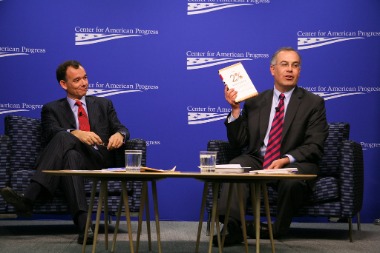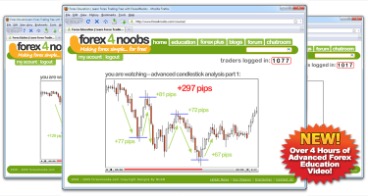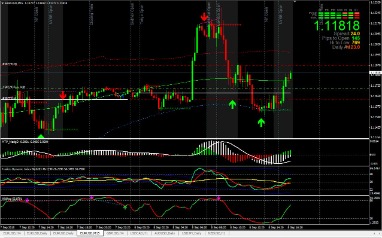
The double top is clear, and a close risk/stop can be set at the highs. The 1st element is the wide body bullish candle signaling potential exhaustion in an uptrend. This is followed https://g-markets.net/ by weak or no effort to continue higher, hence the reversal. The point here is that the “bullish” engulfing candle in the middle of the pattern is “sandwiched” by bearish candles.
Therefore, in a daily chart, a single candle usually represents a day. In a hourly chart, a single chart usually represents a hour. Candlestick patterns in day trading usually work with minute chart. The black one is bearish candle while the one on the right is the bullish candle. The black and white parts of the candles are known as the body while the two lines are known as shadows. No candle pattern predicts the resulting market direction with complete accuracy.
Bearish Patterns
Perhaps the greatest challenge in all of active trading is identifying market state. Understanding when price is trending and when it’s poised for a breakout are key elements of predicting future price action. A doji (plural is also doji) is a candlestick formation where the open and close are identical, or nearly so.

Since Steve Nison introduced them to the West with his 1991 book ‘Japanese Candlestick Charting Techniques’, their popularity has surged. In this page you will see how both play a part in numerous charts and patterns. You can also find specific reversal and breakout strategies.
The Hammer or the Inverted Hammer
The engulfing candle that occurs after a pullback in an overall trend is designed to get you into a trade as the next wave of the trend is likely to unfold. (It doesn’t always.) Trends can persist for a long time or can fail quickly. With the trend isolated and a pullback occurring, wait for the engulfing candle strategy trade signal. A candle day trading downtrend is defined by lower-swinging lows and lower-swinging highs in price. In a downtrend, the declining waves are larger than the pullbacks higher, creating overall progress lower. During a downtrend, you should take only short positions, selling a borrowed asset with the intention of buying and returning it later at a lower price.
- The bullish engulfing pattern appears during bearish trends.
- It is important to learn how to create a money management and risk control plan that will allow you to protect your trading capital and become consistently profitable.
- The candlestick denoting the dominance of buyers may be a burden to sellers.
- These free chart sites are the ideal place for beginners to find their feet, offering you top tips on chart reading.
- For example, a stock can open at $10, rise to $14, and then end the day at $9.
As you can see from the image below the Hammer candlestick formation sometimes indicates a reversal in trend. The hammer candle formation has a long lower wick with a small body. The intuition behind the hammer formation is simple, price tried to decline but buyers entered the market pushing the price up. It is a bullish signal to enter the market, tighten stop-losses or close out a short position. Candlestick patterns for day trading come in all shapes and sizes.
Should I consult other tools beyond candlestick charts?
The shooting star is a bearish reversal candlestick indicating a peak or top. The star should form after at least three or more subsequent green candles indicating a rising price and demand. Eventually, the buyers lose patience and chase the price to new highs (of the sequence) before realizing they overpaid. The best way to learn to read candlestick patterns is to practise entering and exiting trades from the signals they give. You can develop your skills in a risk-free environment by opening an IG demo account, or if you feel confident enough to start trading, you can open a live account today.

These candlestick patterns reveal the strength of both buyers and sellers. The candlestick denoting the dominance of buyers may be a burden to sellers. Each candlestick gives you distinct pieces of information about how the stock or ETF behaved during that time frame. The skinny part of the candle is known as the “wick,” and it shows you the highest and lowest prices reached while the candle was forming. The thick part of the candle is called the “body.” The left side of the body shows you where the price opened, and the right side shows you where the candle closed.
A bearish engulfing pattern develops in an uptrend when sellers outnumber buyers. This action is reflected by a long red (black) real body engulfing a small green (white) real body. The pattern indicates that sellers are back in control and that the price could continue to decline.
Bearish Engulfing Pattern
This suggests that such small bodies are frequently reversal indicators, as the directional movement (up or down) may have run out of steam. Careful note of key indecision candles should be taken, because either the bulls or the bears will win out eventually. This is a time to sit back and watch the price behavior, remaining prepared to act once the market shows its hand. Traditionally, candlesticks are best used on a daily basis, the idea being that each candle captures a full day’s worth of news, data, and price action. This suggests that candles are more useful to longer-term or swing traders.
It forms when the open, low, and close price is the same, and the high price forms a long upper shadow. Doji Candlestick – Doji Candlesticks have very small bodies with the close price being near the open price. The upper and lower shadows are both long, indicating indecision in the stock’s price action.
For this reason, a one minute candle is a plot of the price fluctuation during a single minute of the trading day. The actual candle is just a visual record of that price action and all of the trading executions that occurred in one minute. As the father of candlestick charting, Honma recognized the impact of human emotion on markets.
Technical Indicators
This pattern is usually observed after a period of downtrend or in price consolidation. The price then breaks above the pattern and continues to the upside. These tools are important for risk management in the market. Finally, you should avoid the mistake of not doing a multi-timeframe analysis. Backtesting is an important part when building a trading strategy.
It is important to learn how to create a money management and risk control plan that will allow you to protect your trading capital and become consistently profitable. This chart gives bullish confirmation to the 200-day moving average around October 10 and February 5. To learn more about the Japanese Candlesticks, please watch this video as part of Tradenet’s free day trading course. You can also read about the Japanese Candlesticks at length in The Market Whisperer here. The bearish inside day will typically occur within a broader bear market. The Bullish Engulfing pattern is a two-candle reversal pattern.
Roku Traders Will Need to Be Nimble in the Days Ahead – RealMoney
Roku Traders Will Need to Be Nimble in the Days Ahead.
Posted: Wed, 06 Sep 2023 16:14:40 GMT [source]
For newer traders, even reading candlestick charts can seem like an insurmountable learning curve. There appears no rhyme or reason, and no end to the amount of price and volume data being thrown your way. Like many new traders, you can spend days, weeks, or even months trying every possible time frame or parameter looking for the one that makes a profit. You may try 30-second charts, five-minute charts, for example. Then you try all the non-time-based options, including tick charts and trading volume. It indicates that the selling pressures were stronger than the buying thrust.
The Inside Day Candle Pattern ‒ Pros And Cons
IG International Limited is licensed to conduct investment business and digital asset business by the Bermuda Monetary Authority. Gordon Scott has been an active investor and technical analyst or 20+ years. With indecision candles, we typically need much more context to answer these questions. Essentially, the broader context of candles will paint the whole picture.
